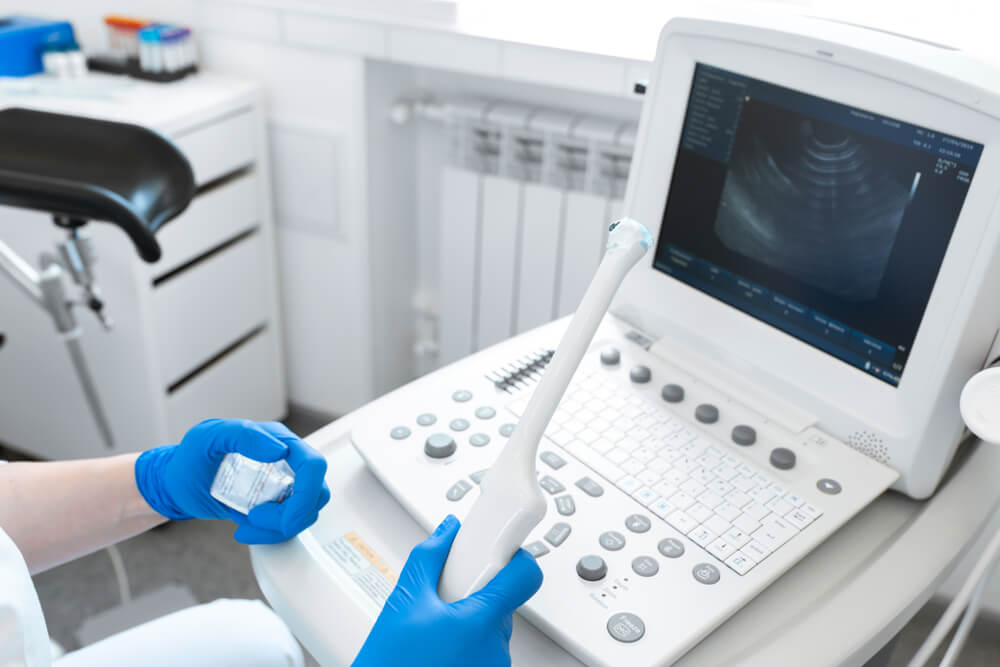In general, ultrasound technology captures images of our internal organs through high-frequency sound waves. Imaging testing is very useful when medical professionals want to have an insight into potential organ abnormalities and diagnose different conditions, while it is quite quick and affordable for patients.
As the name hints, a transvaginal ultrasound is a pelvic ultrasound used during examinations of the female reproductive system (uterus, ovaries, fallopian tubes, cervix, vagina, pelvis, etc.). The term transvaginal refers to how the ultrasound is done, i.e., “through the vagina.” If you are looking for the service of transvaginal ultrasound in Boca Raton & Boynton Beach, make sure you check all the possibilities there are and choose the one most suitable for your particular situation.
Clinics such as Women’s Health Partners offer safe and welcoming spaces for women of all ages when it comes to gynecological examinations, so making the right choice of doctor can be crucial to the quality of your overall health. Regardless if you want to come and do a pregnancy ultrasound or you need some other gynecological services, feeling safe and guided should be your number one priority when choosing your medical provider.
What Is a Transvaginal Ultrasound?

So, performing a vaginal ultrasound through the vagina is the simplest way to explain transvaginal ultrasound. In short, as opposed to the regular pelvic or abdominal ultrasound, where the transducer (wand) is placed outside of the pelvis, in the case of transvaginal imaging, the medical professional inserts the probe two or three inches into the vaginal canal and waits for the images to appear on the screen.
This procedure is quick and painless, giving a very detailed view of the organs in the pelvic area, unlike the traditional abdominal ultrasound. Most doctors order this type of ultrasound when they want to find the cause of certain symptoms, make a specific diagnosis, or monitor a pregnancy.
An endovaginal ultrasound is another name for this procedure because endo means beneath, which is where the transducer is placed, compared to the surface ultrasound usually done.
When it comes to situations in which medical professionals choose to perform a transvaginal ultrasound instead of a regular one, here are some examples:
- When the patient has an abnormal pelvis
- When there is an unclear vaginal bleeding
- When the patient feels pelvic pain
- In cases of ectopic pregnancy
- In cases of infertility
- When the patient comes in to check uterine fibroids or cysts
- When the patient might suffer from a pelvic infection or cancer
- When the patient wants to check whether their IUD is properly placed
Also, you might be advised to get a pregnancy ultrasound transvaginally to:
- Check the cervix for potential changes which would cause pregnancy complications
- Check the placenta for any abnormalities
- Monitor the fetal heartbeat
- Identify and diagnose a potential miscarriage
- Recognize the source of abnormal bleeding
- Confirm an early pregnancy
Transvaginal Ultrasound Preparation
Most often, when you are scheduled to have a transvaginal ultrasound, there is almost no need to prepare anything. When you come to the appointment, you will be asked to take off your clothes (waist down) and take a gown, so wear something loose and comfortable.
Sometimes, depending on the doctor’s recommendation and the reasoning behind the ultrasound, you might be asked to empty your bladder, either partially or completely. If the bladder has to be full, you will have to drink around 30 ounces of liquid about an hour or so before the procedure. When the bladder is full, it helps lift the intestines, and the doctor can get a much better picture of the pelvis area.
Also, if you are menstruating or spotting, you will need to remove the tampon, if you have one, before starting the ultrasound. There is no need to shave before the appointment or make any other adjustments, so if you follow the advice above, you will be set for transvaginal ultrasound
preparation.
The Procedure
When you have fulfilled all the preparation requirements, you will lie on the exam table and bend your knees. Sometimes there are stirrups, but regardless of that, your legs need to be bent in the knees so that the cavity can open up sufficiently.
The probe (ultrasound wand or transducer) will be lubricated, and a condom will be placed over it before insertion. If you have any rubber allergies, please share this with your doctor so they can adjust to the situation and avoid a potential allergic reaction.
When the transducer is inserted, you could feel some pressure, which is very similar to the pressure you feel during a Pap test when a speculum is inserted into the vaginal canal. When the probe is inserted, the ultrasound will be turned on, and very soon, you can see images of the internal organs of the pelvis area on a screen.
After the first images appear, the doctor will turn the wand slowly to get a full picture of the internal organs. In particular cases, a saline solution will be inserted as well to aid in stretching out the uterus and identifying potential abnormalities in the uterine region.
Once the medical professional collects enough pictures to make a detailed analysis, the examination will be over, and you will be free to leave. Sometimes doctors perform an abdominal ultrasound before the transvaginal one just to get every piece of information to establish a proper diagnosis.
Risks of Transvaginal Ultrasound
There are no risks identified when it comes to this procedure, even when it is performed on pregnant women. This is because there is no harmful radiation used during the test. The only negative side of this type of ultrasound is that it might be painful and uncomfortable for some women, but the pain is minimal and goes away as soon as the probe is taken out of the vaginal canal.
If you experience extreme discomfort during the examination, please let the doctor know because this type of testing is not supposed to make you feel great pain and discomfort. Also, if you see vaginal discharge after the examination, that might be caused by lubrication, so do not worry about it; it will most probably disappear in a day or so.
Transvaginal Ultrasound and Pregnancy

This imaging technique may have its uses when you’re expecting. For example, a transvaginal ultrasound in pregnancy may be used to help detect the heartbeat of the fetus in early pregnancy. Furthermore, it may also help experts determine your pregnancy’s gestational age or how far you are in.
Typically, the images made via this method are clearer when compared to traditional imaging techniques (like abdominal ultrasounds, for instance).
Results
When it comes to the results of transvaginal ultrasound, they might come immediately if the imaging is performed by a doctor and not a medical technician. If this is not the case, you might need to wait for a few days until a radiologist analyzes the results and sends them to your chosen medical provider.
Speak to your doctor about the results, and ask as many questions as you want because they are there to help you understand your results and potential treatment options. Transvaginal ultrasound is very helpful in diagnosing conditions such as cancers, cysts, fibroids, pelvic infections, miscarriages, etc., so make sure that you have a clear understanding of the results of the performed ultrasound.
Make an Appointment!
If you are advised to have a transvaginal ultrasound, call our clinic now and schedule an appointment. Our specialists are here to help and guide you through the process, so there is no space for fear!





